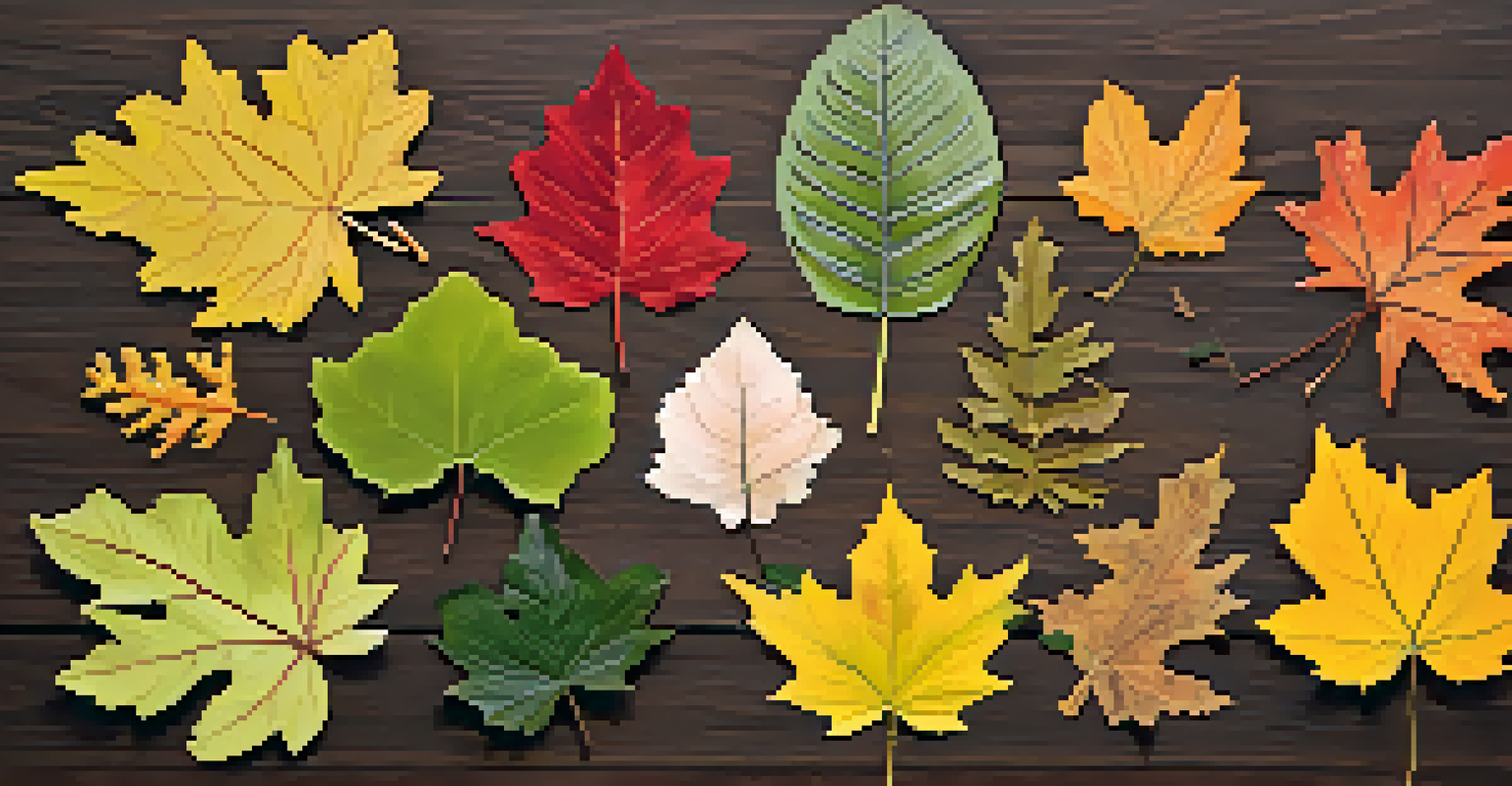Tree Identification: A Guide to Recognizing Common Species

Understanding the Importance of Tree Identification
Identifying trees is not just a hobby; it's a skill that connects you to nature. Recognizing different species can enhance your appreciation for biodiversity and inform conservation efforts. It also helps you understand your local ecosystem and the role each tree plays within it.
The clearest way into the Universe is through a forest wilderness.
Moreover, tree identification is crucial for various practical reasons, such as landscaping, forestry, and even urban planning. Knowing which trees thrive in your area can lead to healthier gardens and parks. Plus, it can help prevent costly mistakes when selecting trees for specific purposes.
Lastly, tree identification can be a fun activity for families and nature enthusiasts alike. Whether you’re hiking, walking in your neighborhood, or visiting a park, being able to name the trees around you adds a layer of enjoyment to your experience.
Basic Tree Terminology You Should Know
Before diving into identification, it's helpful to familiarize yourself with some basic tree terminology. Key terms include 'leaf shape,' 'bark texture,' and 'branch arrangement.' Understanding these concepts will make it easier to distinguish one species from another.

For example, leaf shape can range from needle-like in conifers to broad and flat in deciduous trees. Bark texture can vary significantly, from smooth to rough, and even scaly. These characteristics serve as essential clues in identifying different tree species.
Tree Identification Connects Us to Nature
Learning to identify trees enriches our appreciation for biodiversity and enhances our understanding of local ecosystems.
Additionally, knowing terms like 'deciduous' (trees that shed leaves seasonally) and 'evergreen' (trees that retain their leaves year-round) will enhance your understanding of the trees you encounter. This foundational knowledge sets the stage for more advanced identification techniques.
Using Leaves to Identify Trees
Leaves are one of the most prominent features for tree identification. They come in various shapes, sizes, and arrangements, making them a key characteristic to observe. For instance, the broad, lobed leaves of an oak tree are quite different from the slender needles of a pine tree.
Trees are the earth's endless effort to speak to the listening heaven.
When examining leaves, consider their arrangement on the branch—are they opposite or alternate? Also, take note of their margins—are they smooth, serrated, or lobed? These details can help narrow down your options when trying to identify a species.
Don't forget to observe the color and texture of the leaves, as these can also vary significantly between species and seasons. By paying attention to these leaf characteristics, you can quickly become proficient at recognizing many common tree types.
Examining Bark for Tree Identification
Bark is another important feature to consider when identifying trees. It serves as the protective outer layer and can vary widely in texture, color, and pattern. For instance, the smooth, gray bark of a beech tree is quite different from the rugged, furrowed bark of an oak.
Take time to observe how the bark changes with age, as many trees exhibit different bark characteristics at various life stages. Young trees often have smoother bark, while older trees develop more texture and color variations. This can help you identify the tree's age as well.
Key Features for Tree Identification
Familiarizing yourself with characteristics such as leaf shape, bark texture, and tree growth habits is essential for accurate identification.
Additionally, some trees have unique bark patterns that can serve as identifying markers. The peeling bark of a birch tree, for example, can be a distinctive feature that sets it apart from other species. Learning to recognize these bark characteristics will greatly enhance your identification skills.
Recognizing Tree Shapes and Growth Habits
Tree shape and growth habit are also crucial in identification. Trees can be broadly categorized into several forms, such as conical, rounded, or weeping. For instance, the tall, conical shape of a spruce tree contrasts sharply with the broad, rounded canopy of an apple tree.
Observing growth habits, like whether a tree is upright or sprawling, can provide additional clues. Some trees grow tall and straight, while others may spread wide or even grow in a unique twisted manner. These characteristics can help differentiate between similar species.
Moreover, understanding the typical habitat where a tree species thrives can offer valuable context. For example, willows are often found near water, while pines thrive in drier, sandy soils. This knowledge not only assists in identification but also deepens your understanding of each tree's ecological role.
Utilizing Resources for Tree Identification
There are many resources available to help you identify trees more effectively. Field guides are a fantastic starting point, providing detailed descriptions, photographs, and illustrations of various species. Many of these guides are organized by region, making it easier to focus on trees native to your area.
In addition to books, smartphone apps have become increasingly popular for tree identification. These apps often use image recognition technology, allowing you to take a photo of a leaf or tree and receive instant information about the species. It's like having a tree expert in your pocket!
Resources for Tree Identification
Utilizing field guides, smartphone apps, and local nature groups can significantly assist you in your tree identification journey.
Online forums and local nature groups can also be valuable resources. Engaging with fellow enthusiasts allows you to share experiences, ask questions, and learn from others. Combining these resources can significantly enhance your tree identification journey.
Practical Tips for Identifying Trees in the Field
When you're out in the field, having a few practical tips can make your tree identification experience more enjoyable. Start by choosing a few key features to focus on, such as leaves, bark, and overall shape. This helps prevent feeling overwhelmed, especially when surrounded by numerous species.
Take your time and observe each tree from multiple angles. Sometimes, the identifying features are not immediately apparent from one perspective. Additionally, consider bringing along a notebook to jot down observations or sketch trees you encounter; this can help reinforce your learning.

Finally, don't hesitate to ask for help! Whether it's a friend who knows more about trees or a local expert, collaborating with others can enhance your understanding and enjoyment of tree identification.